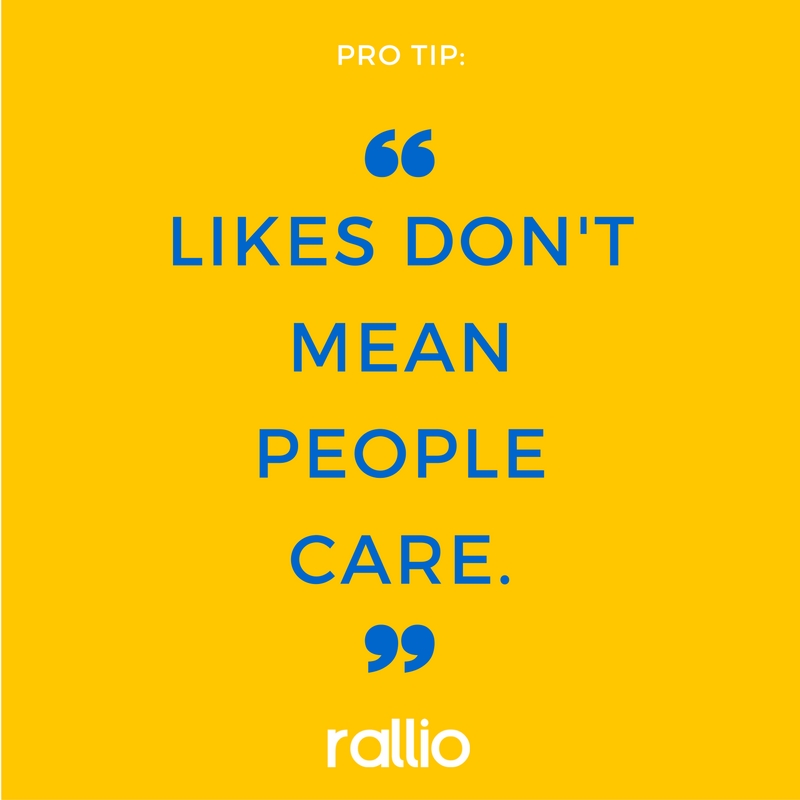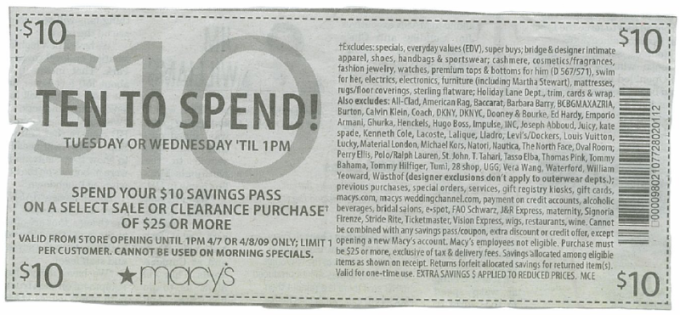When you’re looking to boost your Twitter following, it’s tempting to want to make it happen overnight. Nobody wants to have 43 followers when you could buy thousands all at once, right?
However, buying followers or resorting to other black-hat tactics simply won’t get you the kind of long-term engagement you need to maintain a consistently strong Twitter profile. In fact, as this article notes, black-hat social media can do serious damage to your brand.
That’s why when I recently set out to boost our own following on Rallio, I started by focusing on quality over quantity. (There’s a place, of sorts, for quantity as well, but more on that in tip #3.)
Today, I’ll share with you a few things I’ve learned about boosting your Twitter following organically. I welcome additional insight from those of you who have gone through this process, too.
#1: Like and Retweet
The simplest way to begin attracting new followers is by liking and retweeting posts. The more engaged you are with other profiles, the more you’ll be seen, and the more you’ll gain new followers yourself. As a general rule of thumb, aim to retweet at least one or two new people daily.
When retweeting, make an effort to add insight of your own or call out what you like about the post or article you’re retweeting. You can, of course, simply retweet without commentary, but also add your own 2 cents from time to time. This makes it clear you put thought into the retweet and didn’t simply click a button.
[bctt tweet=”The simplest way to begin attracting new followers is by liking and retweeting posts. #findfollowers” username=”rallioHQ”]
#2: Fit It In When You Can
You don’t have to overwhelm yourself spending time on Twitter. Some people like to carve out a chunk of time every day or so, and others will hop on there throughout the day. Or maybe you alternate between these approaches like I do.
Sometimes I’ll devote focused time, and other times I might just need a break from what I’m doing, or might be waiting at the doctor’s office, or … you get the idea. I like this strategy because it allows me to get on Twitter at different points in the day rather than one specific time when I won’t necessarily find anything or anyone worth tweeting about. Also, it prevents me from exhausting myself thinking I have to get on Twitter at 11 a.m. each day.
Try out both strategies and see what works for you. The point is to make it work!
#3: About That Quantity …
Although it’s imperative to have quality followers with whom you engage regularly, sometimes you have to cast a wide net to find those quality people. Some Twitter users will follow several people initially and then later weed out and unfollow accounts that don’t prove to be worth their time.
Note that once you follow an account, or when someone follows you, you’ll want to make an effort to engage with the account and gauge its value.
[bctt tweet=”Sometimes you have to cast a wide net to find quality #followers.” username=”rallioHQ”]
#4 Thank People … Sparingly
Do not do not thank every single person who likes and retweets your tweets or follows you. That practice will get old fast, and you risk flooding other people’s timelines with your thank-yous.
Instead, thank people for specific reasons. For example, if you found a post to be insightful, mention it along with the user and say why you found it valuable. You’ll show you’re actually reading people’s tweets and you’re willing to recommend those you think are worth a follow. Eventually, others will do the same for you.
Here’s a good list of other ways to thank your followers, say, by visiting their website or commenting on a blog post. I like the following approach as well from @twitrartexhibit thanking an artist for her submission to #TwitterArtExhibit. It’s specific and creatively worded:
You can't beat a purple Llama wearing glasses to make the world a better place! Thanks @TheArtOfVikki – 'A cool Llama in Purples' for #TAE17 pic.twitter.com/9b5rOsvQbI
— POSTCARD ART EXHIBIT – Art for a Cause 🌏 🎨 (@PAEartforacause) February 14, 2017
#5 Locate Influencers
Who are the thought leaders, the movers and shakers in your industry? Find five or 10 of them, and start engaging with them across multiple platforms. That is, don’t stop at Twitter, but rather engage with them wherever they roam (Instagram, Facebook, LinkedIn, etc. … check out this article for more tips on engaging with influencers).
Once you have a fairly established relationship with influencers, reach out directly. You can start simply by asking if they’d be willing to answer a burning question related to your product or service, and then featuring their responses on your blog.
You can then tweet out your new post and mention your influencers, too, so they’ll (hopefully) share your content with their readers. In time, you’ll gain valuable partnerships through which you share each other’s content, create special offers and always have a rich source of content.
#6 Share More Than Once
By some estimates, the life of a tweet is something like 18 minutes. However, you can extend its lifespan simply by sharing the tweet multiple times.
Here at Rallio, we use Coschedule to manage our blog post creation coupled with social media posts that we schedule out over several days’ time. For example, this blog post will get a lot of mileage once I create social media posts about it for Facebook, Twitter and LinkedIn.
You can word your social posts differently each time for the same piece of content, whether it’s a blog post, a press release, a video or an image. It’ll read like a brand-new post, you save yourself some time, and you get the most out of every piece of content.
[bctt tweet=”Extend the life of a tweet by sharing the tweet multiple times. #socialmediatips #twittertips” username=”rallioHQ”]
#7 Use Hashtags
My colleague Becca Edwards wrote an extensive piece, How to Be a Hashtag Expert, that will help you master the hashtag game. She breaks down what a hashtag is, what it can do and how to use hashtags effectively. I recommend giving it a read, as it’s an important part of growing your following.
In addition to using hashtags in your own content, you can search hashtags related to your product or service. When you do, you’ll be able to find and join conversations around pertinent topics.
What other ideas do you have for gaining Twitter followers organically? I’d love to hear your thoughts!




